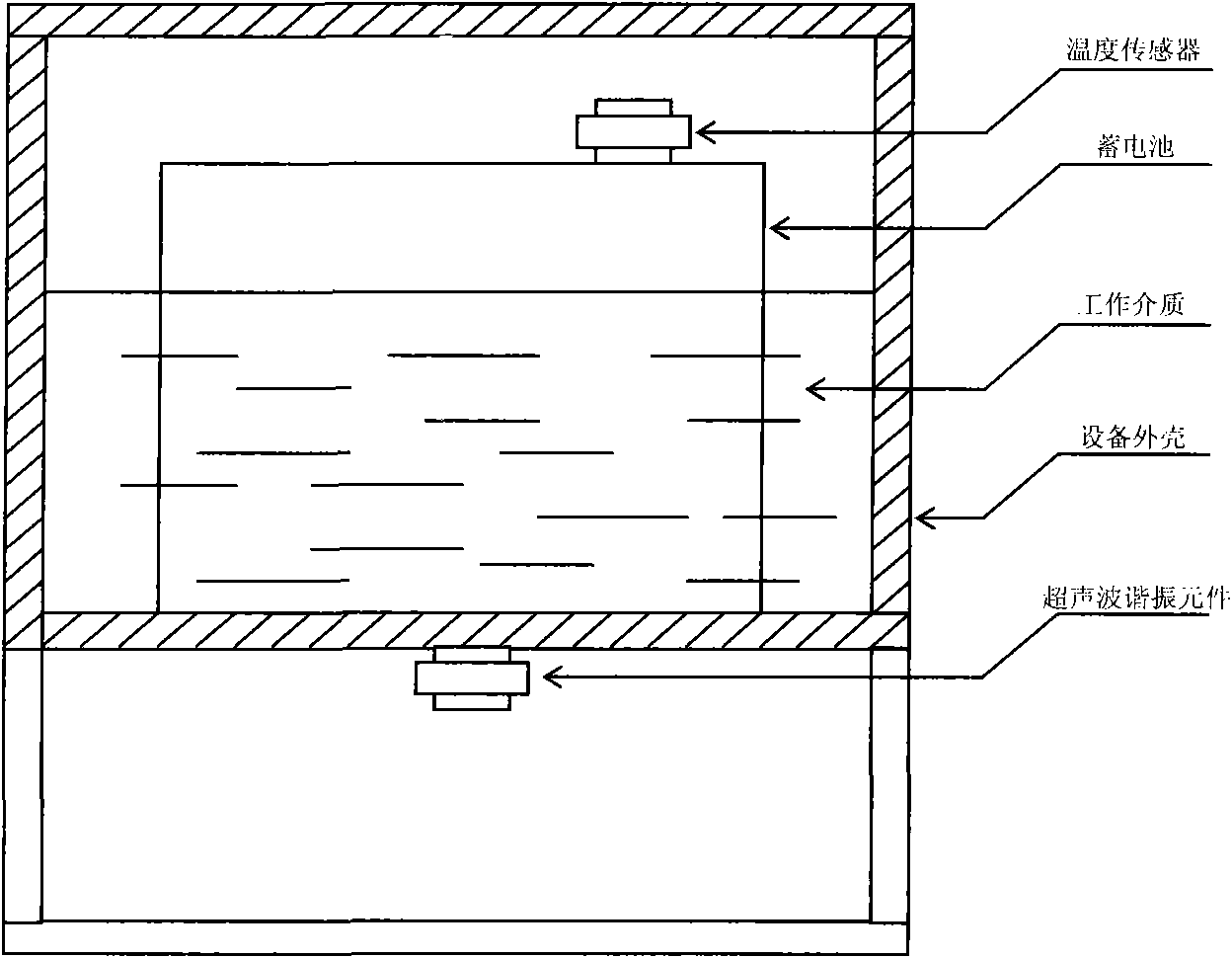Method and device for carrying out charging and discharging upon storage batteries by using ultrasonic waves
An ultrasonic and battery technology, applied in the field of cyclic production of lead-acid batteries, can solve the problems of lack of environmental protection awareness, environmental pollution, endangering human health, etc.
- Summary
- Abstract
- Description
- Claims
- Application Information
AI Technical Summary
Problems solved by technology
Method used
Image
Examples
Embodiment Construction
[0006] The method and device use an ultrasonic generator to generate ultrasonic waves of a certain intensity, place the prepared battery in the ultrasonic propagation path, and use the high-frequency vibration and radiation pressure of the ultrasonic waves to form effective agitation in the electrolyte in the battery. The agitation of the battery drives the movement of the reaction molecules in it, thereby promoting the redox reaction of the battery.
[0007] The method and device for charging and discharging a storage battery using ultrasonic waves is characterized in that: the method uses an ultrasonic generator to generate ultrasonic waves of a certain intensity, places the prepared storage battery in the ultrasonic propagation path, and uses ultrasonic resonance elements and The coupling medium between the batteries allows the ultrasonic wave to be transmitted to the electrolyte in the battery, and the high-frequency vibration and radiation pressure of the ultrasonic wave f...
PUM
 Login to View More
Login to View More Abstract
Description
Claims
Application Information
 Login to View More
Login to View More - R&D
- Intellectual Property
- Life Sciences
- Materials
- Tech Scout
- Unparalleled Data Quality
- Higher Quality Content
- 60% Fewer Hallucinations
Browse by: Latest US Patents, China's latest patents, Technical Efficacy Thesaurus, Application Domain, Technology Topic, Popular Technical Reports.
© 2025 PatSnap. All rights reserved.Legal|Privacy policy|Modern Slavery Act Transparency Statement|Sitemap|About US| Contact US: help@patsnap.com

